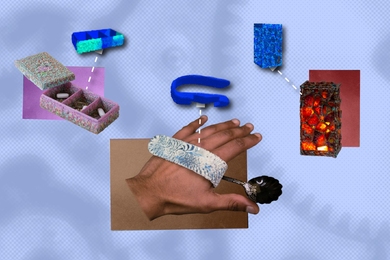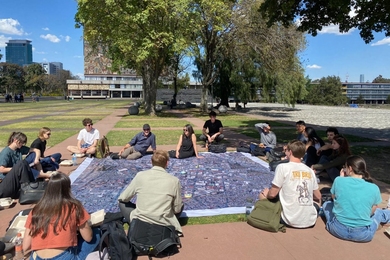The two University of Colorado physicists who achieved a major breakthrough in developing a new state of matter are both MIT graduates. And one of them had been a student of MIT professor Daniel Kleppner who, with Professor Thomas J. Greytak, set out years ago to create this new form of matter--a gas of atoms in a state of Bose-Einstein condensation.
The Colorado physicists are Dr. Carl E. Wieman, who received the SB from MIT in 1973, and Dr. Eric A. Cornell, who received the PhD from MIT in 1990.
Dr. Wieman studied under Dr. Kleppner, Lester Wolfe Professor of Physics and associate director of the Research Laboratory of Electronics, and Dr. Cornell received his PhD for work under Professor David E. Pritchard.
The new form of matter was achieved by chilling a gas of atoms to such a low temperature-less than a millionth of a degree above absolute zero, an unimaginable temperature found nowhere in nature-that their normal motion is suddenly halted. According to The New York Times, "in this almost stationary condition, the wave lengths of the individual atoms. grow to relatively enormous size, overlapping each other and merging into a kind of super atom. This merged atom, despite its great size, obeys the rules of quantum mechanics" and "should allow physicists to peer directly into the realm of the ultrasmall."
According to The Christian Science Monitor, the breakthrough "could lead to the development of `atom lasers,' that may significantly aid efforts to build smaller microchips and better navigation systems. It could also boost research in important fields such as superconductivity, the development of materials that conduct electricity without resisting its flow."
The creation of this new state was first postulated more than 70 years ago by Albert Einstein and Indian physicist Satyendra Nath Bose, and physicists have been attempting to achieve it ever since.
Dr. Kleppner and other scientists at MIT and elsewhere were lavish in their praise of the achievement.
Dr. Kleppner was quoted as saying that the experiment was "clear and convincing, good enough for a textbook."
In another quote, he said, "Although we would obviously have liked to see this first, the discovery is a boost to everyone. It comes at a good time. Science is being battered, and it's nice to know that beautiful things still happen."
Professor Greytak told The Boston Globe that the method used by the Colorado physicists was "beautiful." He added, "It's going to be a classical paper."
A version of this article appeared in MIT Tech Talk on August 30, 1995.





